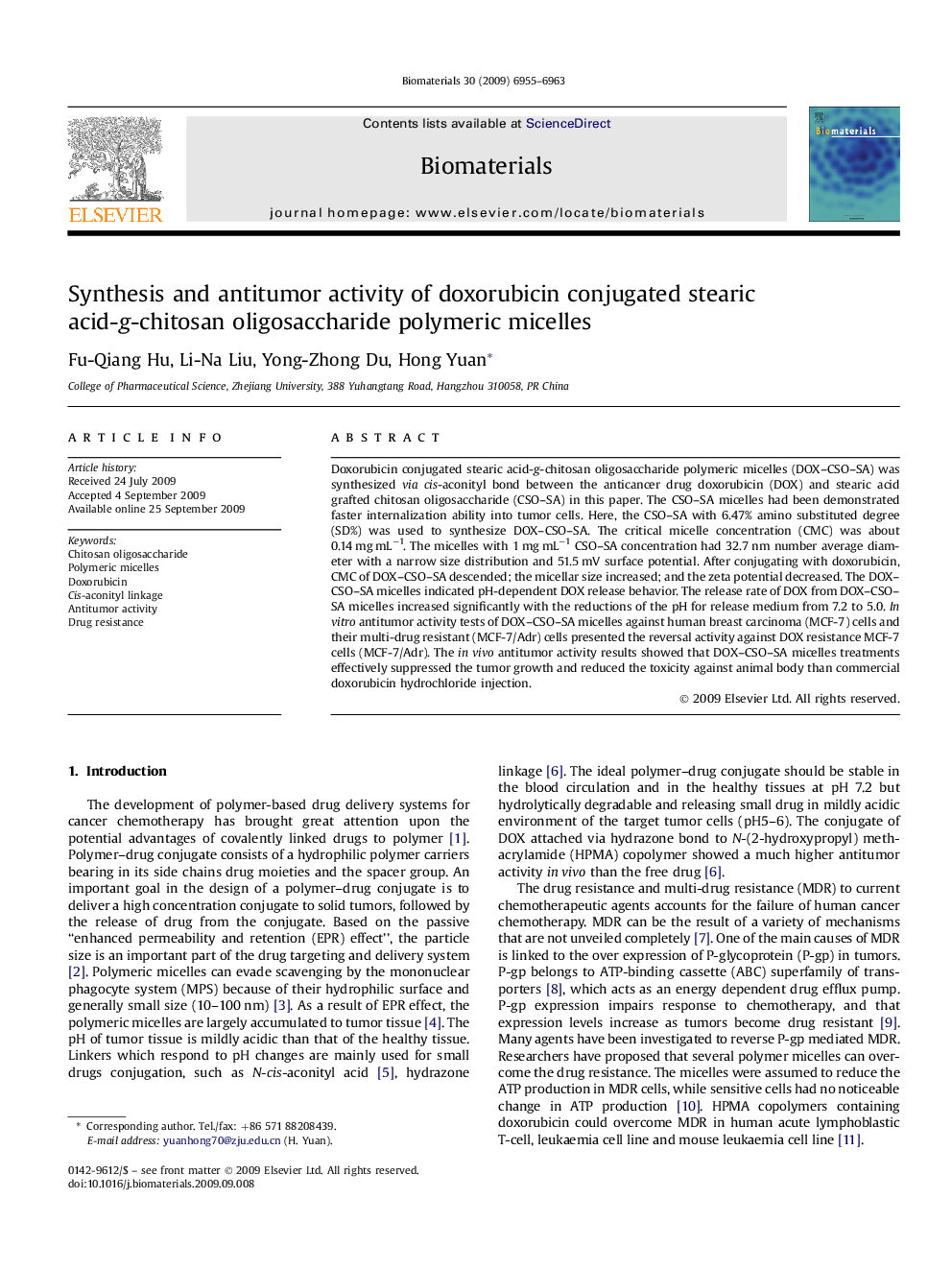| Article ID | Journal | Published Year | Pages | File Type |
|---|---|---|---|---|
| 8779 | Biomaterials | 2009 | 9 Pages |
Doxorubicin conjugated stearic acid-g-chitosan oligosaccharide polymeric micelles (DOX–CSO–SA) was synthesized via cis-aconityl bond between the anticancer drug doxorubicin (DOX) and stearic acid grafted chitosan oligosaccharide (CSO–SA) in this paper. The CSO–SA micelles had been demonstrated faster internalization ability into tumor cells. Here, the CSO–SA with 6.47% amino substituted degree (SD%) was used to synthesize DOX–CSO–SA. The critical micelle concentration (CMC) was about 0.14 mg mL−1. The micelles with 1 mg mL−1 CSO–SA concentration had 32.7 nm number average diameter with a narrow size distribution and 51.5 mV surface potential. After conjugating with doxorubicin, CMC of DOX–CSO–SA descended; the micellar size increased; and the zeta potential decreased. The DOX–CSO–SA micelles indicated pH-dependent DOX release behavior. The release rate of DOX from DOX–CSO–SA micelles increased significantly with the reductions of the pH for release medium from 7.2 to 5.0. In vitro antitumor activity tests of DOX–CSO–SA micelles against human breast carcinoma (MCF-7) cells and their multi-drug resistant (MCF-7/Adr) cells presented the reversal activity against DOX resistance MCF-7 cells (MCF-7/Adr). The in vivo antitumor activity results showed that DOX–CSO–SA micelles treatments effectively suppressed the tumor growth and reduced the toxicity against animal body than commercial doxorubicin hydrochloride injection.
